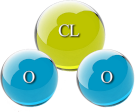CDS research Blog: Difference between revisions
No edit summary |
|||
| Line 63: | Line 63: | ||
[[The Electro-Molecular Mechanism in Red Blood Cells: A Poloidal-Toroidal-Resultant Helix Field Model|Read Article]] | [[The Electro-Molecular Mechanism in Red Blood Cells: A Poloidal-Toroidal-Resultant Helix Field Model|Read Article]] | ||
== [https://www.sciencedirect.com/science/article/pii/S0891584923005014 Toxicity of the spike protein of COVID-19 is a redox shift phenomenon: A novel therapeutic approach] == | |||
''Dr. Laurent Schwartz a, Manuel Aparicio-Alonso b, Marc Henry c, Miroslav Radman d, Romain Attal e, Ashraf Bakkar f'' | |||
===== ABSTRACT ===== | |||
We previously demonstrated that most diseases exhibit a form of anabolism due to mitochondrial impairment: in cancer, a daughter cell is formed; in Alzheimer’s disease, amyloid plaques; and in inflammation, cytokines and lymphokines. | |||
Infection by Covid-19 follows a similar pattern. Long-term effects include redox shifts and cellular anabolism as a result of the Warburg effect and mitochondrial dysfunction. This unrelenting anabolism leads to cytokine storms, chronic fatigue, chronic inflammation, and neurodegenerative diseases. Drugs such as lipoic acid and methylene blue have been shown to enhance mitochondrial activity, relieve the Warburg effect, and increase catabolism. Similarly, combining methylene blue, chlorine dioxide, and lipoic acid may help reduce the long-term effects of Covid-19 by stimulating catabolism. | |||
[https://www.sciencedirect.com/science/article/pii/S0891584923005014 Read full article] | |||
Revision as of 19:22, 2 September 2024
More of our research you can find here...
What do D-dimer values and ferritin indicate about the condition of the body?
D-dimer values and ferritin levels are important biomarkers that can provide significant insights into the condition of the body.
D-dimer is a small protein fragment that is present in the blood after a blood clot dissolves. Elevated levels of D-dimer can indicate that there is an increased amount of clot formation and breakdown in the body, which may suggest conditions such as deep vein thrombosis (DVT), pulmonary embolism, or disseminated intravascular coagulation (DIC). However, elevated D-dimer levels can also be seen in other situations such as infection, inflammation, or recent surgery, so they must be interpreted in conjunction with clinical findings and other diagnostic tests.
Ferritin, on the other hand, is a protein that stores iron in the body and releases it in a controlled fashion, playing a crucial role in iron metabolism. Low ferritin levels typically indicate low iron stores, which can lead to iron deficiency anemia, causing symptoms like fatigue, weakness, and shortness of breath. Conversely, high ferritin levels may indicate an excess of iron in the body or inflammation, as ferritin is an acute-phase reactant that can increase in response to inflammatory conditions or infections.
Together, D-dimer and ferritin levels can provide valuable information regarding clotting status and iron metabolism, helping healthcare providers assess and manage various medical conditions effectively.
Known types list of Cancer
There are several known types of cancer that affect different parts of the body. Each type has its own characteristics and treatment options. Some of the most common types include breast cancer, lung cancer, prostate cancer, colorectal cancer, skin cancer, and leukemia. Additionally, there are other less common types such as pancreatic cancer, ovarian cancer, liver cancer, and kidney cancer. Each of these cancers can vary significantly in their symptoms, risk factors, and prognosis. Understanding the specific type of cancer is crucial for determining the most effective treatment strategies and improving patient outcomes.
Efficacy list of ClO2 against known Pathogens
The efficacy of chlorine dioxide (ClO2) against known pathogens has been studied extensively in various settings, demonstrating its effectiveness as a powerful antimicrobial agent. Research indicates that ClO2 is capable of inactivating a wide range of bacteria, viruses, and fungi. This includes common pathogens such as Escherichia coli, Salmonella spp., Listeria monocytogenes, and Staphylococcus aureus, among others.
In addition to its bactericidal properties, ClO2 has shown significant antiviral activity against viruses such as influenza and norovirus, making it an important consideration for infection control in both healthcare and food processing environments. Studies have consistently illustrated that ClO2 operates effectively over a range of concentrations and exposure times, allowing for versatility in its application.
Furthermore, the mode of action of chlorine dioxide involves the disruption of cellular processes and the oxidation of essential biomolecules, which contributes to its broad-spectrum efficacy. As a result, ClO2 is being increasingly utilized in various disinfection protocols, especially in areas where controlling pathogens is crucial for public health and safety.
Report on CDS by Dr. Luis Prieto Valiente, PhD, is a professor at UCAM (Catholic University of Murcia) using Chlorine Dioxide as an “unproven intervention”

Report by Dr. Luis Prieto Valiente, PhD,
an esteemed professor of Statistical Analysis and Research Methodology, regarding the significance, or lack thereof, of employing Chlorine Dioxide as an “unproven intervention” in the treatment of COVID-19 infections. This report aims to critically evaluate the existing evidence surrounding the use of Chlorine Dioxide, assessing its potential benefits and drawbacks in the context of the ongoing pandemic. The analysis will explore various studies, clinical trials, and expert opinions to determine whether this substance should be considered a viable option for patients suffering from COVID-19 or if it poses more risks than advantages.
Chlorine dioxide drinking water test as an indication of oxygen deficiency or increased oxygen demand by means of lactate determination in capillary blood before and after administration of the oxygen donor ClO2 (Chlorine dioxide) in drinking water
by Dr. Peter Römer
Physiological Basis of Lactate Production and Measurement
Energy Production in the Body
Energy in the human body is primarily produced as adenosine triphosphate (ATP) within the mitochondria, which are often referred to as the cell's power plants or energy factories. This intricate process predominantly utilizes glucose through a biochemical pathway known as aerobic glycolysis when oxygen is present. During this efficient metabolic process, approximately 36 moles of ATP are generated per mole of glucose consumed, alongside minimal lactate production, which typically occurs when oxygen levels are low or during intense physical activity. This remarkable ability of the mitochondria to convert energy from nutrients into a usable form is essential for maintaining cellular functions and overall bodily health.
Appeal by Dr. Muratore Montesinos from Argentina and his experiences with CDS
Advances in the treatment of chronic diseases: The experience of Dr. Muratore Montesinos
Translated from Spanish
Santiago del Estero, Argentina –
In the constant pursuit of improving treatments for chronic and terminal illnesses, Dr. Luis Alberto Muratore Montesinos, a surgeon specialized in emergencies and forensic diseases, implemented an innovative approach in his clinical practice. His work focused on treating complex conditions such as diabetic foot, diabetic ulcers, and diabetic vascular diseases, using a combination of advanced medical technologies and alternative treatments with excelent results.
Unfortunately, Dr. Muratore recently passed away, leaving a significant void in the medical community. His dedication and passion for the health of his patients have been a beacon of hope for many, and his loss is deeply felt by colleagues and patients alike.
The Electro-Molecular Mechanism in Red Blood Cells: A Poloidal-Toroidal-Resultant Helix Field Model
by Dr.h.c. Andreas Ludwig Kalcker
Red blood cells (RBCs) are vital components of the circulatory system, primarily responsible for transporting oxygen from the lungs to tissues and returning carbon dioxide to be exhaled. Their unique toroidal shape, akin to a donut, is not just a structural characteristic; it plays a crucial role in their functionality, particularly in navigating through narrow capillaries. The shape and stability of these cells are maintained by intricate electro-molecular forces, which are essential for understanding blood circulation and overall physiological health.
Toxicity of the spike protein of COVID-19 is a redox shift phenomenon: A novel therapeutic approach
Dr. Laurent Schwartz a, Manuel Aparicio-Alonso b, Marc Henry c, Miroslav Radman d, Romain Attal e, Ashraf Bakkar f
ABSTRACT
We previously demonstrated that most diseases exhibit a form of anabolism due to mitochondrial impairment: in cancer, a daughter cell is formed; in Alzheimer’s disease, amyloid plaques; and in inflammation, cytokines and lymphokines.
Infection by Covid-19 follows a similar pattern. Long-term effects include redox shifts and cellular anabolism as a result of the Warburg effect and mitochondrial dysfunction. This unrelenting anabolism leads to cytokine storms, chronic fatigue, chronic inflammation, and neurodegenerative diseases. Drugs such as lipoic acid and methylene blue have been shown to enhance mitochondrial activity, relieve the Warburg effect, and increase catabolism. Similarly, combining methylene blue, chlorine dioxide, and lipoic acid may help reduce the long-term effects of Covid-19 by stimulating catabolism.
